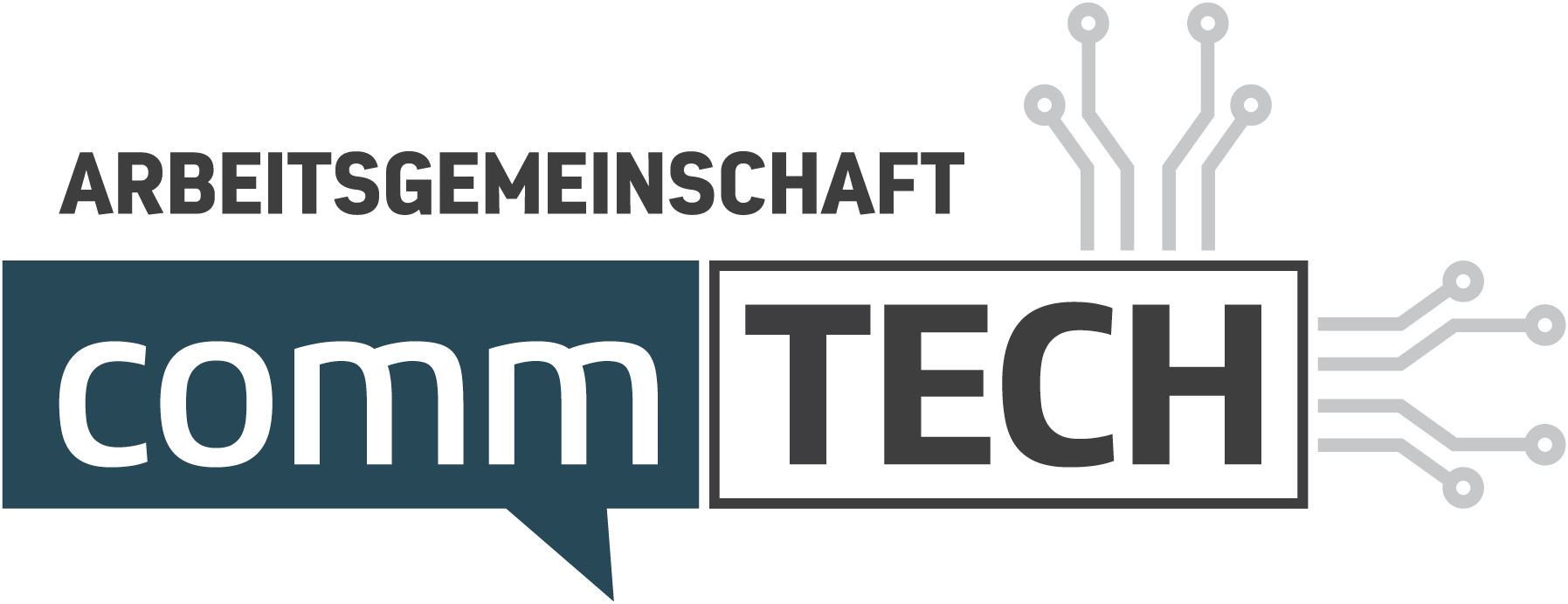- 2. November 2022
- Posted by: Die Redaktion
- Category: NEWS
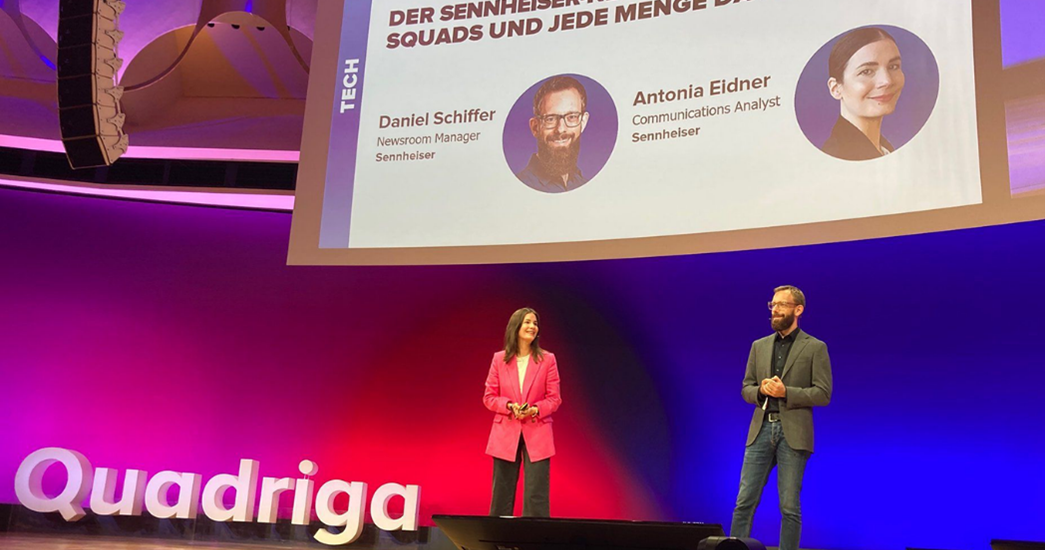
The Sennheiser newsroom: Circles, squads and lots of data
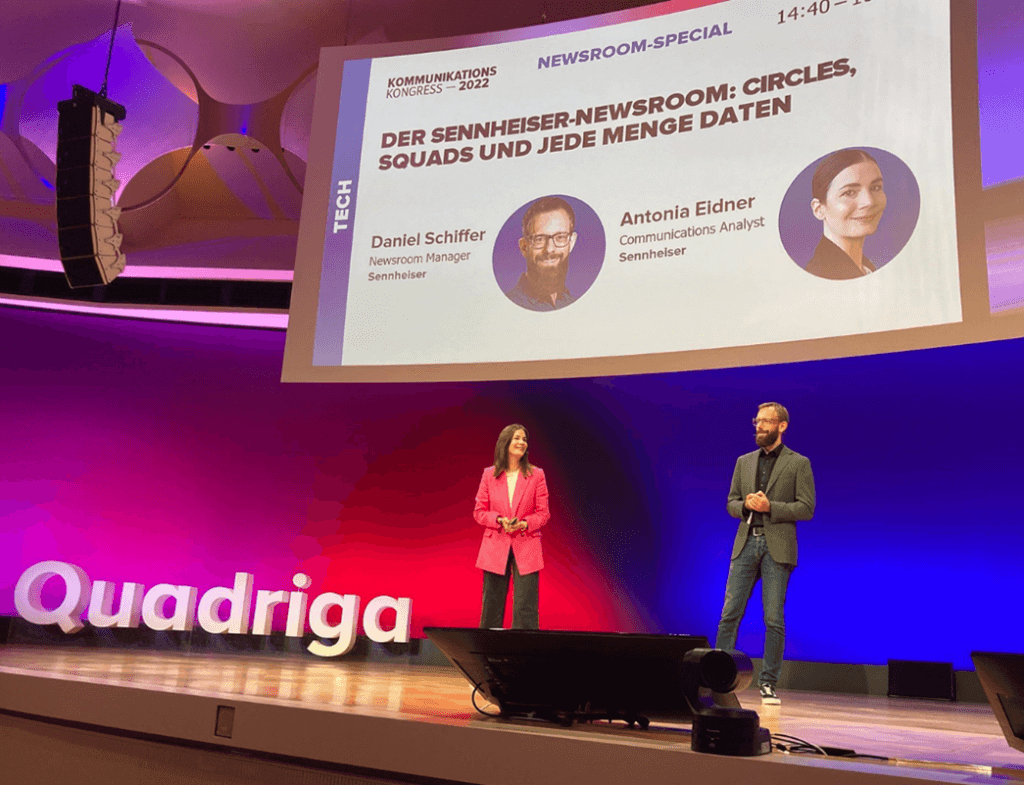
Author: Antonia Eidner & Daniel Schiffer
“It doesn’t suit us. The classic newsroom doesn’t fit Sennheiser!”
After saying this sentence out loud for the first time, we were somewhat relieved, because at least we knew what we didn’t want. The idea of introducing a newsroom at Sennheiser already arose at the end of 2019. The basic idea – as is probably the case with most newsrooms – was to identify synergies throughout the company and make better use of them. Early 2020, we were ready to go. Actually. Because Corona and slowed us down first. Then about a year later, we revisited the idea with a dedicated team. At the time we thought:
“Just a few more finishing touches and we’ll be ready to go this summer!”
And then came the announcement in May that Sennheiser’s consumer business would be sold to Sonova. It quickly became clear what this meant for our newsroom concept. This is because Sonova would continue to communicate under the Sennheiser brand. It was clear to us that, against this background, we would not get anywhere with our previous concept. Then we took a deep breath and said: Well, then just differently! This was followed by a six-month phase in which we adapted the concept together with the colleagues we would later work with in the newsroom.
Sonova acquired Sennheiser’s consumer business on March 1, 2022, and on March 15 we launched our new newsroom with around 60 colleagues worldwide.
And what makes it different now? Our newsroom is based on three main pillars:
Holacracy, collaboration, and data focus.
So what is this holocracy?
“Leading without a boss:in” or “abolishing hierarchy” – sounds like paradise to some, but complete chaos to others.
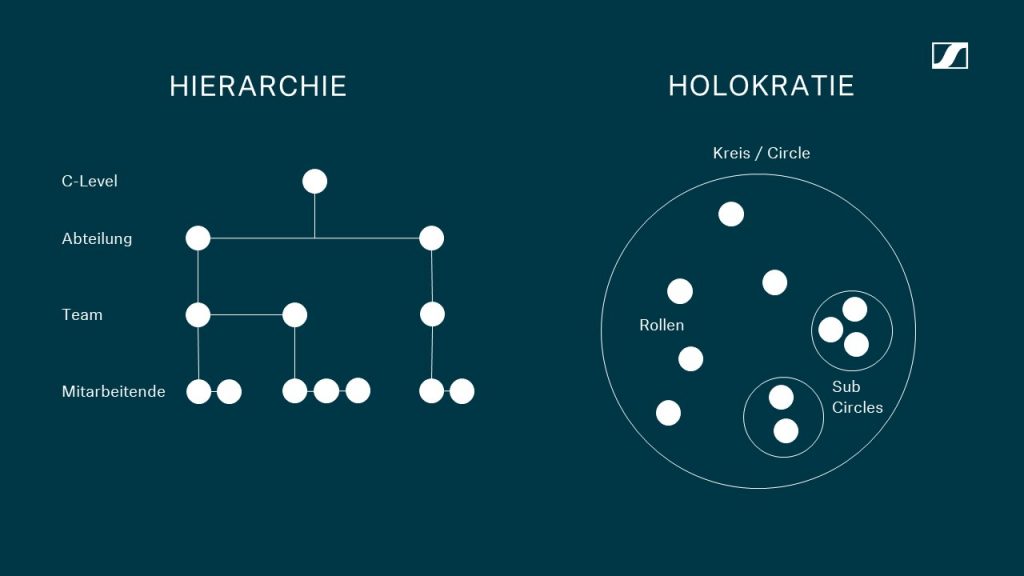
The basic principle of the holocratic organization is the rejection of traditional management styles and the distribution of responsibility to the employees: They are encouraged to make decisions. Some advantages: Participation, transparency, democracy. At the heart of the holocratic organization are roles and circles. The employees take at least one role of their choice. The roles stand for skills and are detached from a job description. They can be changed, adapted or discarded again depending on the topic. Several rolls together form a Circle. Circles can be compared to departments or working groups. The holocratic organization has a fixed set of rules so that cooperation does not degenerate into chaos.
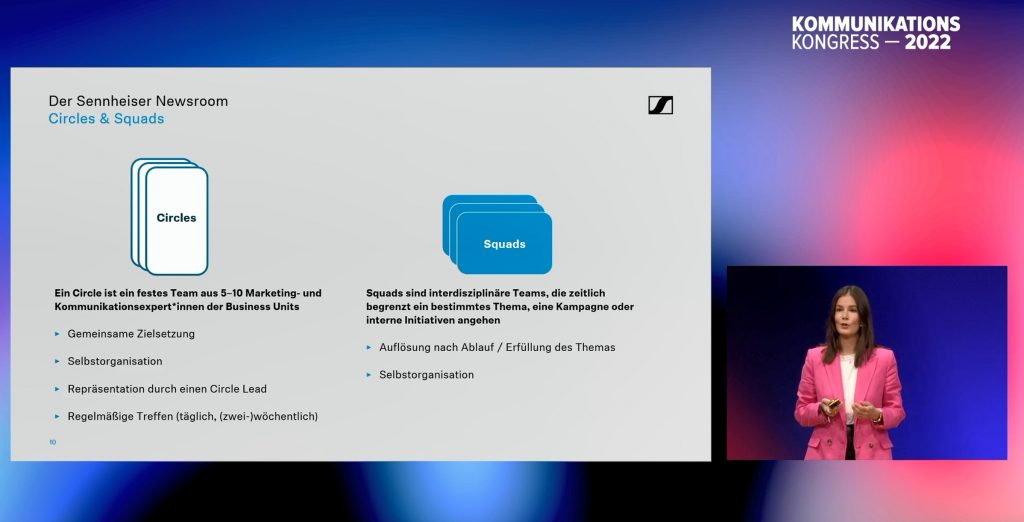
The concept of the Sennheiser newsroom is inspired by agile elements in addition to holocracy – also known as the “Spotify model” – which is why we also talk about Circles and Squads.
Circles are permanent teams with five to ten members from the marketing and communications functions. They focus on specific, common topics and goals, organize themselves and are led by a so-called Circle Lead. Circles meet regularly at a mutually agreed meeting rhythm.
Squads are temporary teams that bring together all key internal stakeholders on a specific topic (e.g., campaign or crisis). They also manage themselves and dissolve after the expiration of the respective topic.
And how does the collaboration work?
In our newsroom, we bring together all colleagues who communicate for the Sennheiser Group and the Sennheiser brand. We work with our meetings and circles along the content management cycle – from planning to creation and distribution to analysis.
In doing so, we not only coordinate and create transparency among ourselves, but also further develop the Circle topics together and across departments: How do we want to work with data in the company in the future? How do we adjust our social media communications when platforms release new features? Which overarching communication issues concern all of us in the company? This allows us to reach more, create more relevant content, and act faster. And across different countries and time zones.
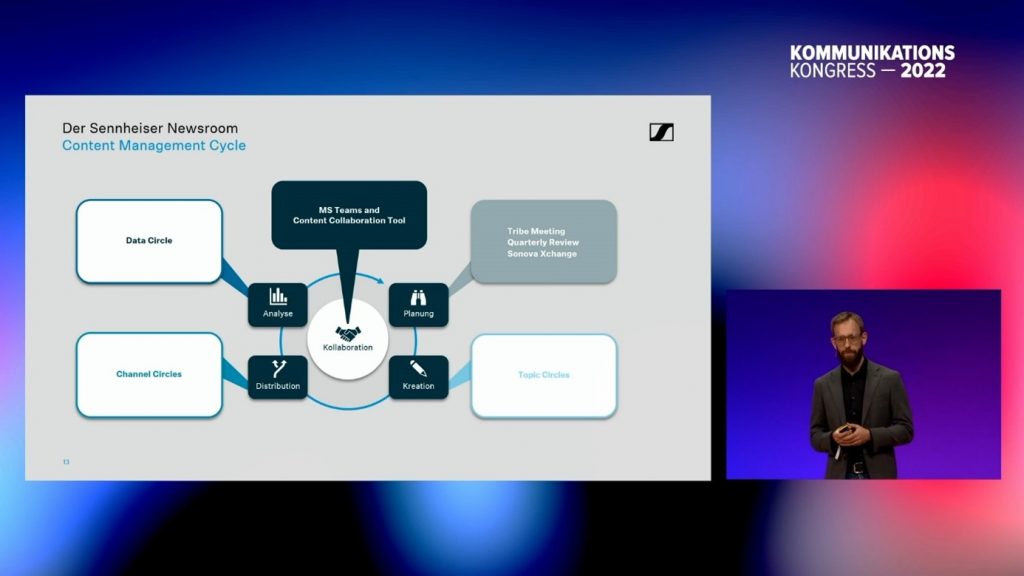
“Lots of data”
We knew from the outset that data would play a key role in the realignment of the newsroom. Today, we can look at three key insights that have emerged within the first few months of newsroom work.
- Holocracy helps data work: The way we work together naturally creates synergy. In the Data Circle, colleagues from PR, marketing, CRM, BI, etc. regularly exchange information about data projects and definitions of KPIs and the use of tools. The so-called “Data Snack” for the Newsroom Meeting quickly became a very popular element and helped to establish the topic of data analytics: Data was made practically visible to the members of the Newsroom via trend and industry insights.
- People at the center. Data work is inextricably linked to digital technologies and tools. But no one needs another performance dashboard whose results are left without interpretation. So we first had to get to grips with data culture and realize that although we all talk about data topics in some way, we speak a very different language. Awareness of this grows in mutual dialogue about needs. Once again, it became clear; listen first, then talk about technology support.
- Role change: Especially in the area of data, we observe that new skills, specializations and expert:ing knowledge are needed. The Data Circle is a wonderful opportunity to integrate different skills of colleagues. Intensive learning, testing and jumping in at the deep end are all part of the process.
And where are we today?
Eitherhierarchy or holocracy, the introduction of a newsroom is first and foremost a change process. And this must be accompanied. So our “real” work is just beginning. We recently conducted a survey of our Newsroom Tribe to understand where things are going well with the newsroom and where we need to improve. Because the most important thing for us – that the approach remains suitable and can grow with us and new requirements.
Have you had similar experiences with a holocratic organization or are you considering implementing one yourself? For questions or an exchange on this, feel free to contact us at antonia.eidner@sennheiser.com or daniel.schiffer@sennheiser.com .
